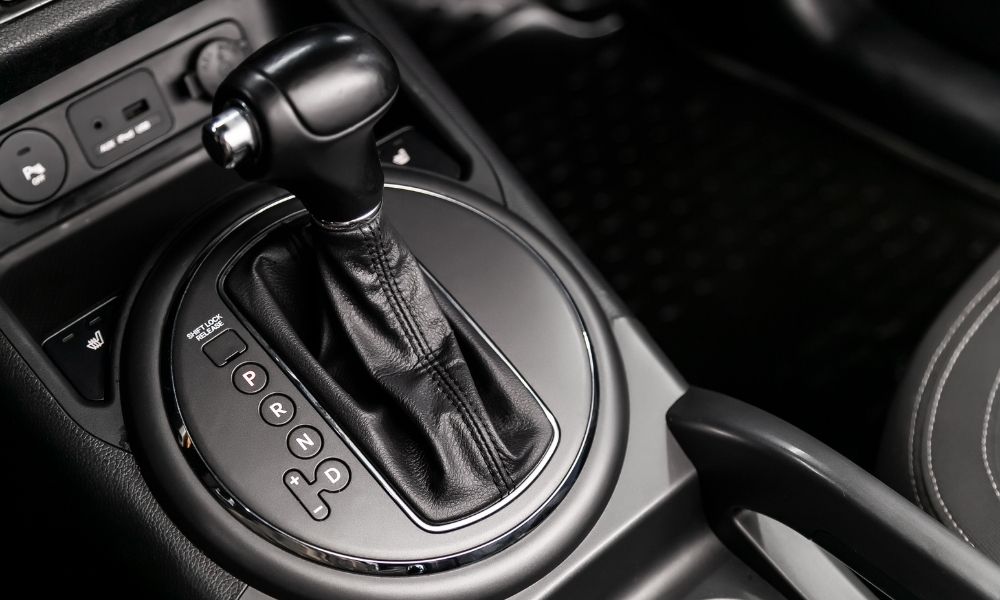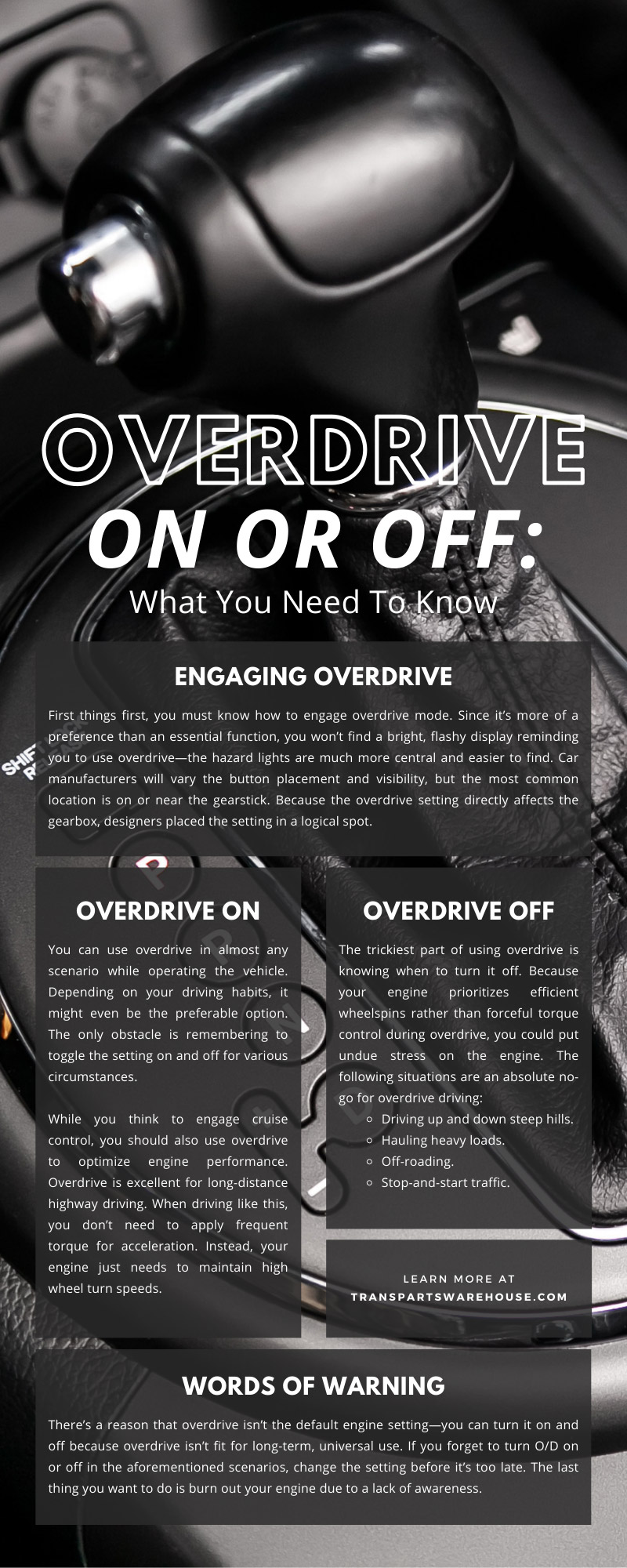
There are two types of drivers: those who know everything about their vehicle and those who simply use it for transportation. Regardless of your inclination toward car curiosity, chances are that you haven’t thought much about your vehicle’s overdrive setting. And no, you don’t need to be a total gearhead to learn what you need to know about having overdrive on or off.
Overdrive 101
If you’ve ever seen the “O/D” indicator light on your dashboard, you probably ignored it or had to pull out your owner’s manual to figure out the mysterious orange letters. Here’s a brief overview of your car’s overdrive.
What Is Overdrive?
Simply put, overdrive reduces stress on your engine. The pistons start whirring into action whenever you engage the accelerator and produce a force that moves your vehicle forward. However, the way your engine creates this power should change depending on your driving scenario.
Overdrive mode prioritizes faster wheel rotations over constant torque production. The core of the change happens in the gearbox, transferring the engine’s power differently than usual. When in overdrive, your vehicle maintains speed at lower revolutions per minute—or RPM, as your dashboard may say.
How Does It Impact Your Car?
Suffice it to say that overdrive can significantly alter how your vehicle drives. For one, you’ll have much lower fuel consumption, boosting the ratio of mileage to fuel use. Because the engine isn’t working as hard to produce massive amounts of torque, it won’t run as hard, reducing gas use.
Using overdrive appropriately will also reduce engine noise, which might be a nice change from the usual waxing and waning thrum. Most importantly, though, overdrive will extend the life of your engine. You’ll have less wear and tear because you don’t force the engine to operate at its peak. Engaging the overdrive setting can actually save you big in the long run.
Using Overdrive Effectively
Overdrive is all about efficiency. Whether it’s engine power, fuel consumption, or speed maintenance, this driving mode will benefit you in unforeseen ways. Yet, you’ll only feel the effects when you use it the right way.
Engaging Overdrive
First things first, you must know how to engage overdrive mode. Since it’s more of a preference than an essential function, you won’t find a bright, flashy display reminding you to use overdrive—the hazard lights are much more central and easier to find. Car manufacturers will vary the button placement and visibility, but the most common location is on or near the gearstick. Because the overdrive setting directly affects the gearbox, designers placed the setting in a logical spot.
Once you engage the overdrive setting, a signal on your dashboard should light up. Vehicles should display an “O/D” indicator light or some variation of it. If you don’t notice the light, you may not be in overdrive mode. Or the setting may not connect to the electrical interface, in which case, you should consult the owner’s manual for clarity.
Overdrive On
You can use overdrive in almost any scenario while operating the vehicle. Depending on your driving habits, it might even be the preferable option. The only obstacle is remembering to toggle the setting on and off for various circumstances.
While you think to engage cruise control, you should also use overdrive to optimize engine performance. Overdrive is excellent for long-distance highway driving. When driving like this, you don’t need to apply frequent torque for acceleration. Instead, your engine just needs to maintain high wheel turn speeds.
Overdrive Off
The trickiest part of using overdrive is knowing when to turn it off. Because your engine prioritizes efficient wheelspins rather than forceful torque control during overdrive, you could put undue stress on the engine. The following situations are an absolute no-go for overdrive driving:
- Driving up and down steep hills. Navigating inclines and declines requires carefully controlled power and lots of it. When driving uphill, your engine must produce continuous torque to propel the vehicle forward; otherwise, you’ll roll back down. Overdrive doesn’t maximize power output, so be sure to turn it off when you notice a steep hill approaching.
- Hauling heavy loads. Similar to climbing and descending hills, your car must produce uninterrupted power to tow large loads. You don’t want to burn the engine out in an improper gear when you must apply more force to get the job done.
- Off-roading. When you venture into the unknown, you put your car through the wringer. Sure, off-roading is fun, but you’re not necessarily looking to optimize engine performance for a simple, long-distance trip. Off-roading requires spontaneous spurts of high power to pull through mud pits and climb over rocky outcrops. Turn off overdrive before driving off the road.
- Stop-and-start traffic. No one likes to stay stuck in stop-and-start traffic, least of all an engine in overdrive. You should use overdrive on the highway only over long stretches of consistent speeds. When you’re constantly accelerating and decelerating at a moment’s notice, you need boosts of torque that an engine in overdrive can’t provide. If you live in a populous area with awful rush hour traffic, be sure to disengage overdrive when you notice a gridlock forming ahead.
Words of Warning
There’s a reason that overdrive isn’t the default engine setting—you can turn it on and off because overdrive isn’t fit for long-term, universal use. If you forget to turn O/D on or off in the aforementioned scenarios, change the setting before it’s too late. The last thing you want to do is burn out your engine due to a lack of awareness.
If overdrive causes problems with your vehicle performance, it may be time to check under the hood. Though you may grasp what you need to know about having overdrive on or off, set your eyes on the engine and transmission to assess any damage. If you notice a broken or malfunctioning piece, you should reach out to our technicians at Transparts Warehouse for replacement performance transmission parts. Our team can help you fix your mechanical issues in no time.


